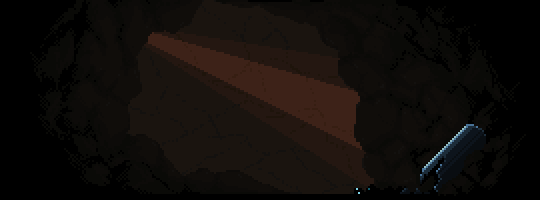If you've ever browsed through the entries of the Matoran Dictionary or been brave enough to delve into those old Learning Matoran lessons, you may have run into a concept that goes under the (pretty obtuse) name of "splitting+displacement" or (even worse) "variable placement". It's usually applied to things called "particles" or "affixes", and usually very little explanation is provided for what it is and where it comes from. Sorry.
In this post, I’ll attempt to add some flesh to the bones of this concept, which applies to grammatical affixes in the etymologies of Matoran words and involves breaking these units apart and moving them around for various purposes. The idea itself is of my own fabrication, and therefore has no real basis in the canon, so I won't really spend much time making a case that it "exists". However, I will make a case that the concept, even if non-canon, is really, really useful if applied systematically, so why not use it?
First, some terminology: I will for the most part dispense with the "splitting+displacement" label. The right word is actually circumfix. What is a circumfix? It's basically just another kind of affix, alongside prefixes (affixes attached at the beginning of a word), suffixes (affixes attached at the end of a word), and even infixes (affixes attached inside of a word).
Circumfixes are attached "around" a word, so they are technically like a prefix that is added along with a suffix. We clear? Great.
Jumping right in, here's my proposal for affixes in Matoran: I have found that it is useful to assume that some of the prefixes and suffixes postulated in Matoran etymology can be converted into a circumfix-form for various reasons--mostly deriving new words from old ones. This would look something like the following, using a postulated verb kya (Recall from the last post that -ya is assumed to be an affix in this case, so that's what will be undergoing modification):
Step 1: kya = kia (ya consists of two units, -i- and -a)
Step 2: k-i-a > a-k-i (the -a unit is displaced as a prefix before the stem k-, leaving -i behind as a suffix)
Step 3: aki
Pretty simple, no? The same process can easily be applied to other affixes/particles: as long as we can split the original affix/particle into two discrete units (in this case, -ya > i-, -a), we can displace the second unit as a prefix on the stem. And there are a couple of further variations that might be possible as well. We'll stick to the basics for now though.
Anyways, what could this kind of circumfixal variant be used for? Well, think about it: The splitting and displacement of the original affix technically obliterates the affix as a discrete unit. We could easily associate this kind of change with, say, a change in meaning—perhaps a change in word category? I have done just this: When the verbal affix -ya is split into a circumfixal variant, this corresponds to a change in the category of the stem from verb to (deverbal) noun.
At this point, you may be able to glimpse some possible applications of this system. Consider this: We just derived a word aki, presumably a noun, from a postulated verb kya. Aki happens to be the name of the Kanohi Mask of Valor. Technically, this is backwards: When I first came up with this system, I started with aki and reverse-engineered it to kya. Either way, it works. Let's see how else we can apply this.
Sticking with aki for the moment, there's another word that is closely associated with it: Akamai, the name of the Toa Kaita (the "Spirit of Valor") who is the wearer of the Kanohi Aki. In-universe, there is clearly a relationship between Akamai and Aki, and the nature of this relationship is further strengthened if we look at another example of a Toa Kaita: Wairuha, the "Spirit of Wisdom" who wears the Kanohi Rua. Even more parallels? So the names of the Toa Kaita are related in some way to the names of their Kanohi masks. Focusing on aki/akamai, let's do some more reverse-engineering:
Note that akamai exhibits the same a-...-i pattern that results from the splitting+displacement of -ya, as already exemplified by a-k-i. If we assume that akamai is derived via the same verb > noun process as aki, we can easily trace back through the steps:
Step 3: akamai
Step 2: a-kama-i > kama-i-a
Step 1: kamaia = kamaya
Presto! We have derived akamai from an original verb kamaya. What could this verb mean? In order to find out, let's return to aki for a moment. According to canon, aki means "valor". Thus far, I have postulated that aki is derived from a verb kya, which I would further derive from an older form *ka-ya. For numerous reasons, I define ka as "power, energy, ability", hence, I translate kya (roughly) as "to do, act, take initiative", and based on these assumptions, aki could easily be translated as "(taking) action, initiative", later construed as "courage, valor".
That takes care of aki. Now on to akamai: If kya originates from ka, according to the same pattern, kamaya would clearly originate from kama. I define ma as "mastery, control". Keeping with the definition of ka above, ka-ma would mean roughly "mastery of power/energy/ability", while the verbal form kamaya would end up as "to master doing/acting/taking initiative". According to the same process of construal applied to aki above, this means that akamai could eventually be translated "master of courage/valor". In all, I think that fits pretty darn well.
So the upshot of this post is that I've (hopefully) illustrated some of the potential applications of the "circumfix-variant" idea in the form of providing some (I think) very appropriate, interrelated etymologies for the words Aki and Akamai. All in a day's work.
-
 4
4


1 Comment
Recommended Comments